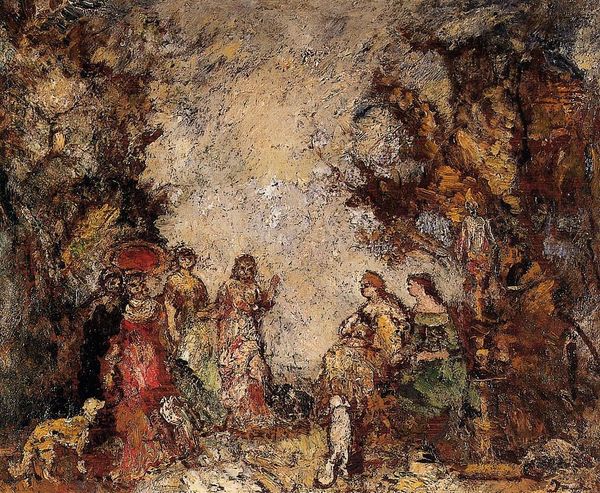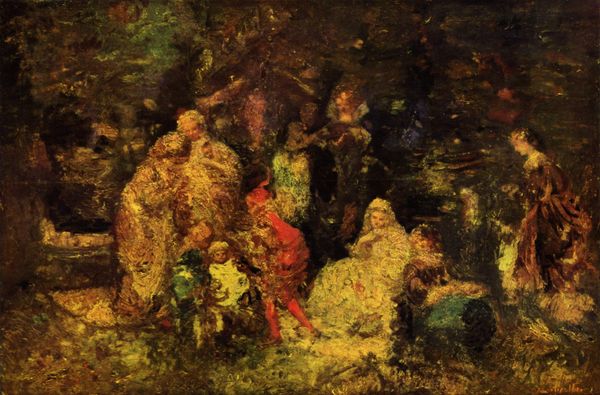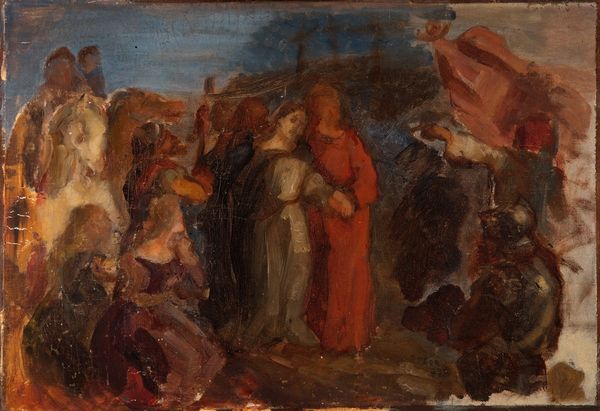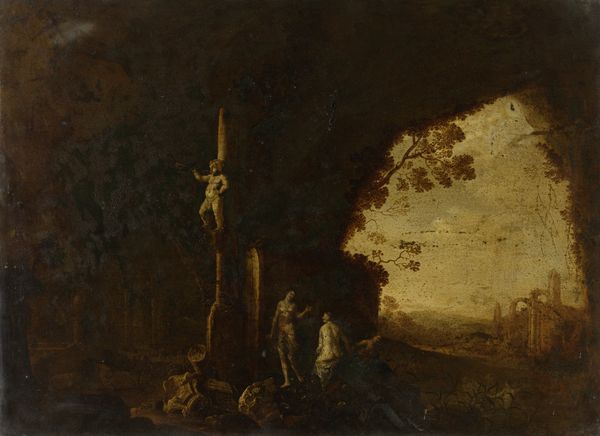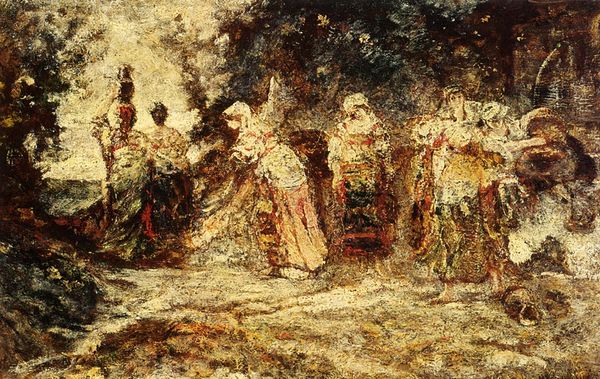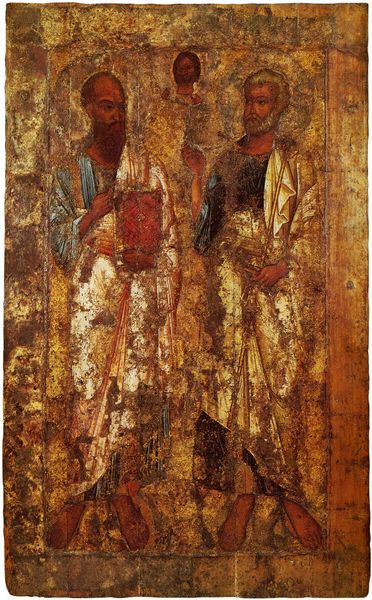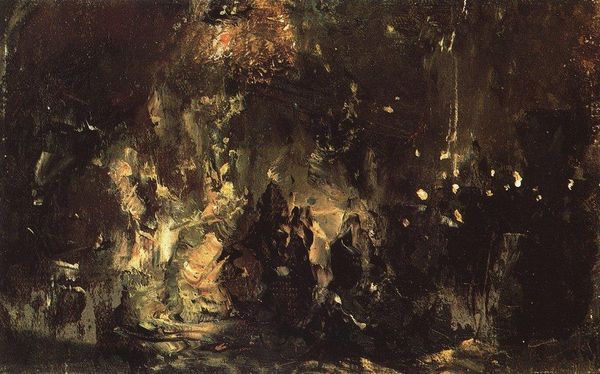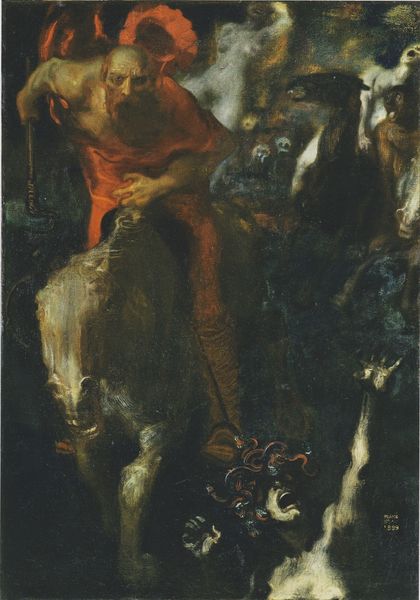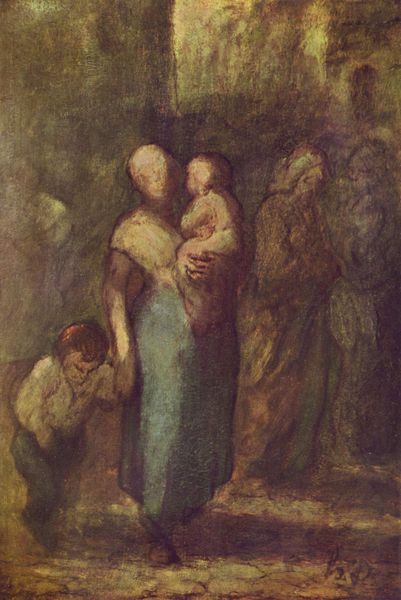
painting, oil-paint, impasto
#
painting
#
oil-paint
#
textured
#
figuration
#
impasto
#
group-portraits
#
romanticism
#
post-impressionism
Dimensions: 36.2 x 48.9 cm
Copyright: Public domain
Curator: This painting is titled "Gallant Party" by Adolphe Monticelli. It's an oil painting currently held in a private collection, and notable for its impasto and textured surfaces. What are your initial impressions? Editor: It feels dreamlike, almost like a half-remembered scene. The figures seem to emerge from the shadows, their forms softened by the artist’s technique. The thick application of paint certainly adds a tactile quality to it, though. Curator: Absolutely. Monticelli's application of oil paint is so rich, almost sculptural. The texture isn't just decorative; it contributes to the overall dynamism of the scene. What's striking is that Monticelli worked outside academic circles and developed this highly personal technique, with a rather prolific production and that might raise questions on studio practice or art market? Editor: You are right! It's very evocative of the late 19th-century French society. The brushwork almost dissolves the scene, like memories of a formal gathering are becoming a fleeting suggestion. Do you think his focus on fleeting social moments speaks to the evolving role of the art world? I mean, shifting from serving a purely aristocratic elite towards something more modern and accessible? Curator: Precisely, that evolution must be seen within the context of shifts in art patronage and exhibition venues. The materiality speaks to an attempt of giving something back to art patrons: literally, giving more matter and labor, more tangible oil paint put into art. Did this generate larger expectations? I guess this is an answer for collectors of the time. Editor: I agree, his painting encapsulates the contradictions of the era. There's a surface display of elegance and luxury but there is also something obscured, maybe unsettled. What does it tell us about what he perceived of societal transformations in French art at that time? Curator: Monticelli really plays with perception through this painting’s materiality. The texture isn't just a stylistic choice, it is part of the meaning and a key for an economical discussion around labor involved in art-making. He's essentially offering the audience a more raw material interpretation through the paint itself. Editor: In conclusion, thinking about how galleries and artistic circles operate today, what relevance does it still hold? Curator: It remains relevant because it prompts questions about art as a commodity, while the materiality engages dialogues on labor and creative production and the social impact of these concepts. Editor: And for me, I see how the painting offers a glimpse into a changing society finding its feet, reflecting those questions in the soft edges and elegant but ephemeral gatherings that Monticelli painted so beautifully.
Comments
No comments
Be the first to comment and join the conversation on the ultimate creative platform.
